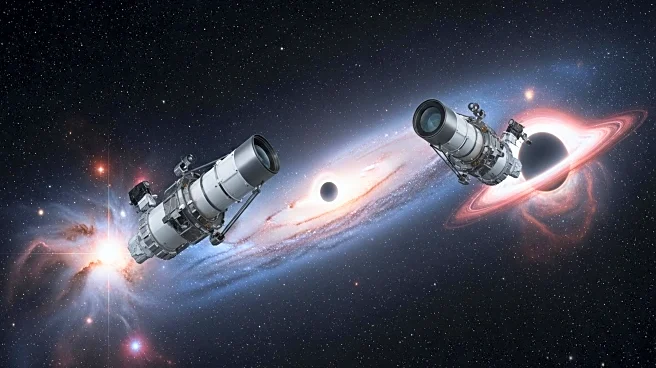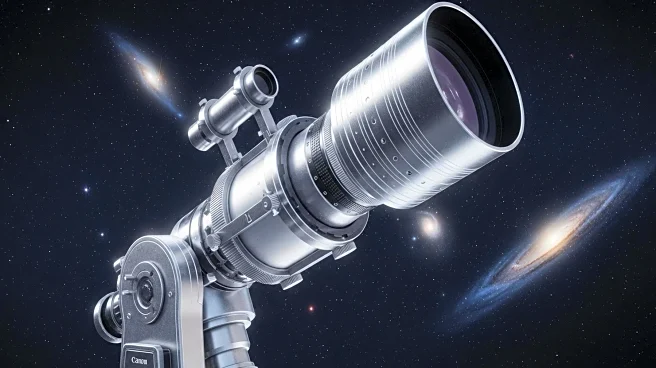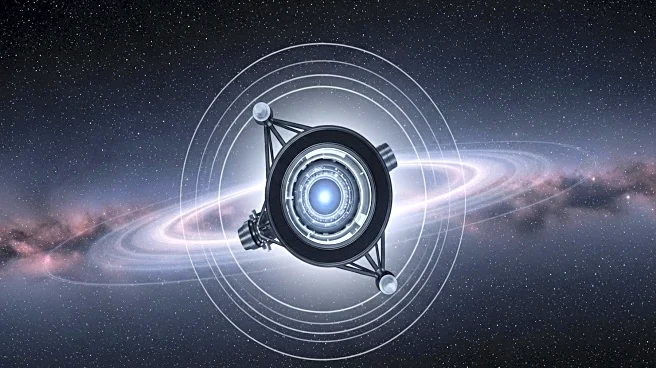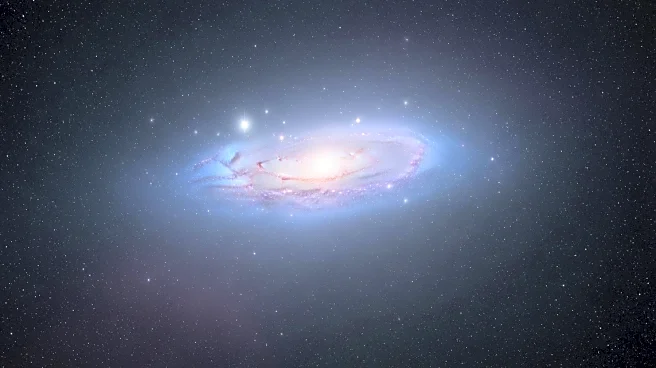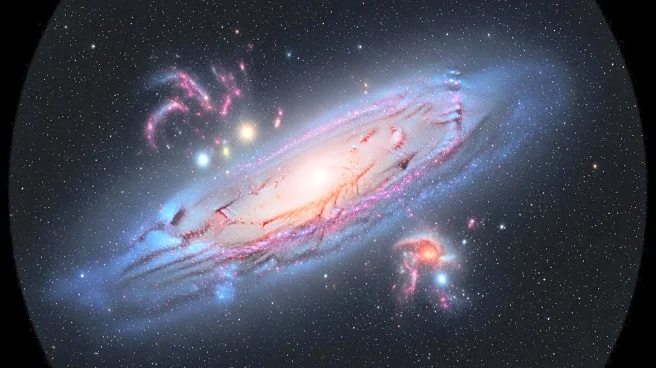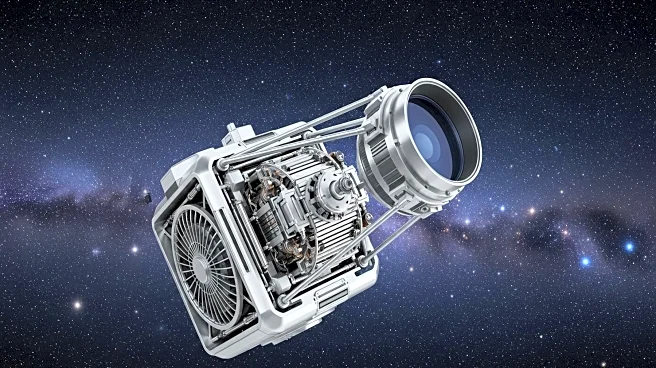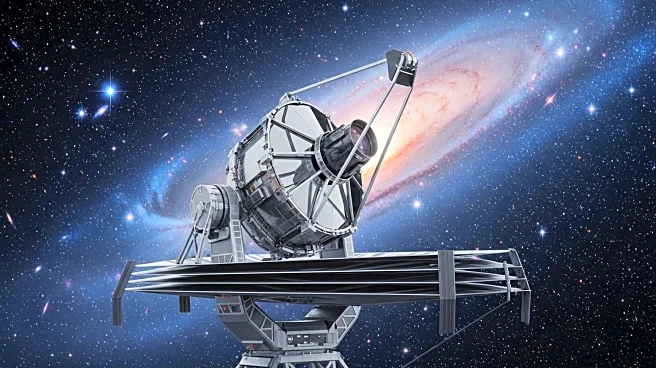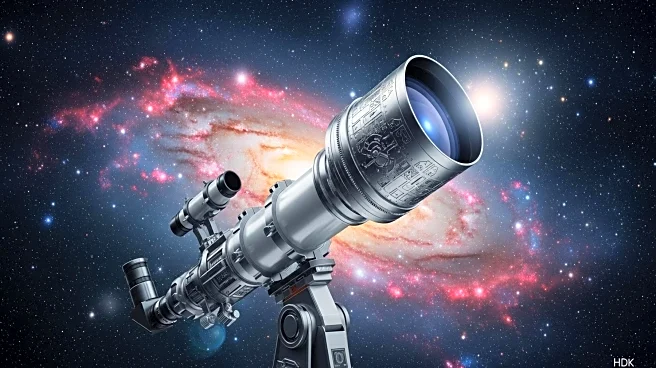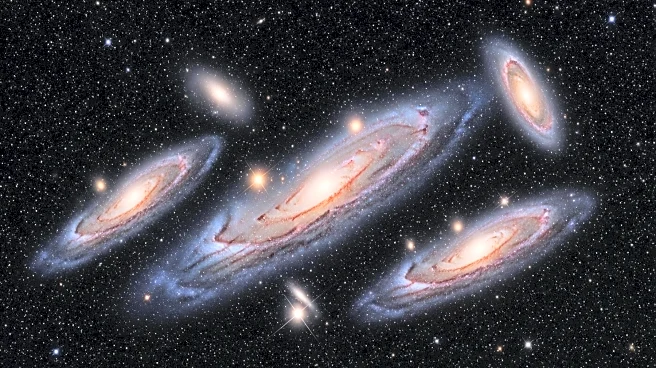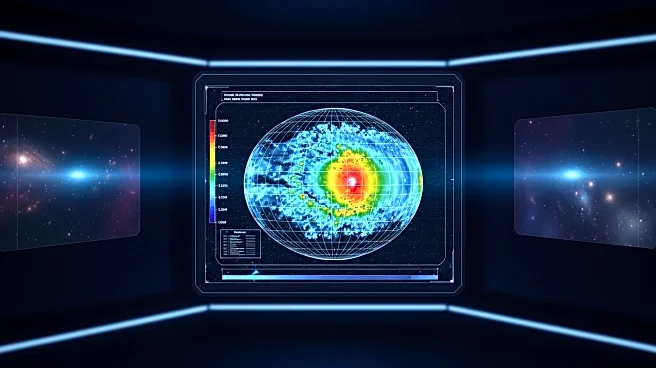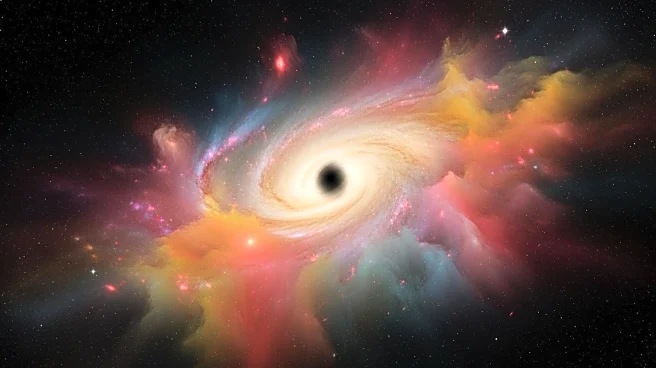What's Happening?
NASA's James Webb Space Telescope (JWST), Euclid telescope, and the upcoming Nancy Grace Roman Space Telescope are set to collaborate in detecting supermassive black holes from the early universe. These telescopes aim to identify black holes with masses millions or billions of times higher than the sun, dating back to when the universe was less than 270 million years old. The JWST has already detected supermassive black holes from less than 1 billion years after the Big Bang, challenging existing models of black hole growth. Researchers propose alternative models, such as the 'direct collapse scenario,' where black holes form directly from collapsing gas and dust, bypassing the formation of stars.
Why It's Important?
The collaboration between these telescopes could revolutionize our understanding of cosmic evolution and the formation of supermassive black holes. Detecting black holes at such early stages could validate new models of black hole growth, suggesting they were born massive rather than growing through mergers and accretion. This research could provide insights into the conditions of the early universe and the processes that led to the formation of these cosmic giants. The findings may influence future astronomical studies and theories regarding the origins of black holes.
What's Next?
Researchers plan to conduct simulations to track the growth history of early direct collapse black holes, aiming to predict their mass and detectability with upcoming surveys. The synergy between JWST, Euclid, and Roman telescopes is expected to enhance the detection capabilities, potentially identifying around 100 black holes just 250 million years after the Big Bang. These efforts will help refine black hole formation models and offer a detailed picture of the early universe.
